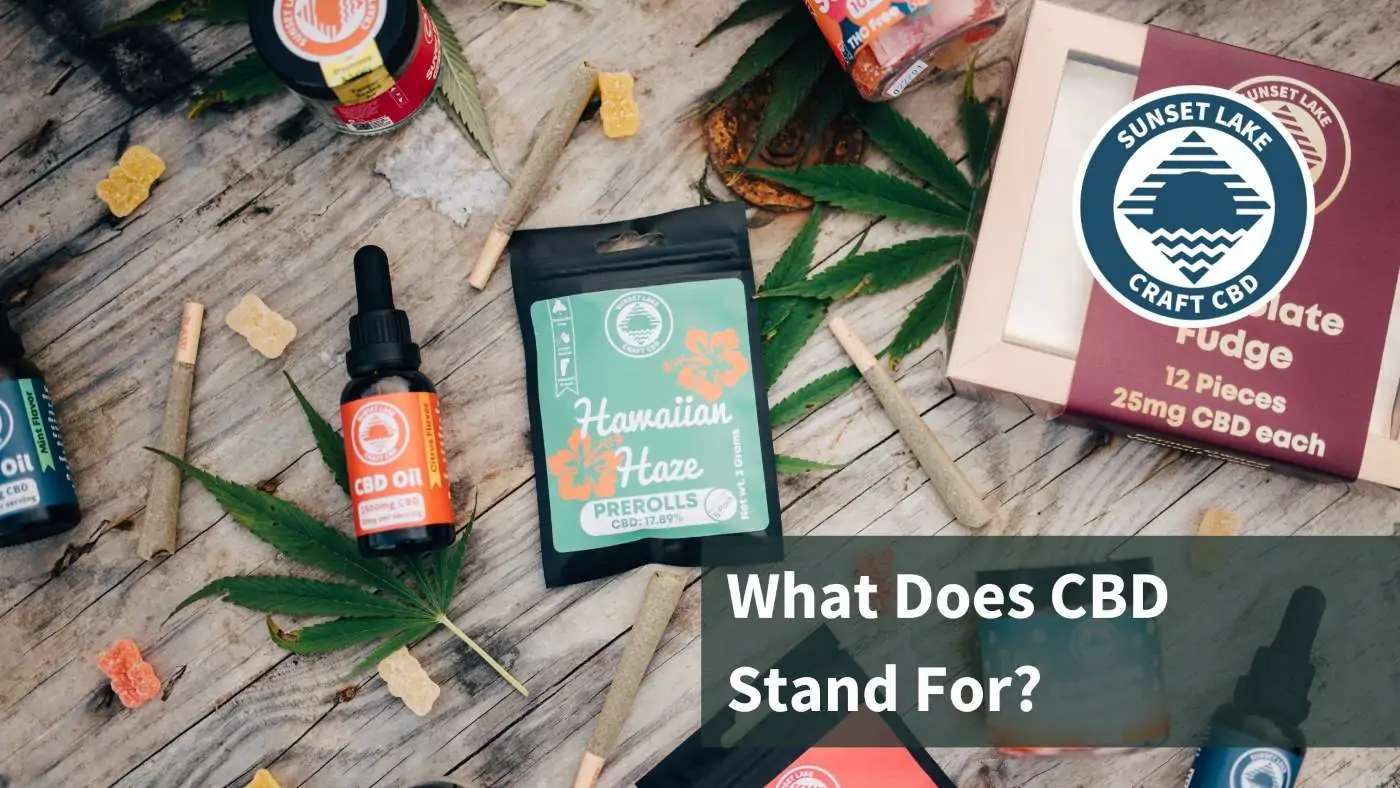Every new industry has its fair share of jargon and the CBD industry is no different. There are so many three-letter abbreviations that it’s easy to feel a little turned around. One of the questions we get occasionally is: What does CBD stand for? A great question!
At the end of this post, you’ll know
- What CBD stands for
- Other common three-letter cannabinoids
- And another common hemp-industry acronym
CBD Stands For…
CBD is an abbreviation for cannabidiol. The letters CBD come from within the word shown here: Canna-Bi-Diol.
CBD is one of the more than 100 cannabinoids, or chemical compounds that interact with your endocannabinoid system, found in hemp and marijuana. THC is another well-known cannabinoid, but unlike THC, CBD is non-psychoactive and non-addictive.
Related: What are Terpenes?
How Does CBD Work?
CBD interacts with our body’s endocannabinoid system and helps facilitate the uptake of beneficial cannabinoids that your own body produces, called endocannabinoids (endo- meaning from within.) Our body’s endocannabinoid system is responsible for:
- Mood
- Stress
- Appetite and metabolism
- Inflammation
- Much more…
What Are The Benefits Of CBD?
While the research has yet to be confirmed by FDA studies, there is some research that suggests CBD can help with a number of issues, including:
This post is in no way claiming that CBD can diagnose, treat, cure, or prevent illness or disease.
Is CBD A Drug?
In the most technical sense, yes, CBD is a drug. It’s a naturally-occurring substance that you can take to help relax, improve focus, or help manage sleep.
CBD is also the main ingredient in Epidiolex, an FDA-approved anti-seizure medication.
The 2018 Farm Bill removed CBD from the Controlled Substance Act. While we can think of CBD as a beneficial substance, it would be incorrect to consider CBD a drug in the same way that narcotics are.
What Does CBDa Stand For?
The letters CBDa are an abbreviation of cannabidiolic acid, Canna-Bi-Diolic Acid, the acidic precursor molecule of CBD.
Cannabidiolic acid is mainly found in raw, unprocessed forms of hemp and will convert to CBD via a process called decarboxylation (a crucial process to observe in order to ‘activate’ CBD hemp flower for making CBD edibles.)
As of now, less is known about CBDa and its potential benefits, though some early studies indicate that CBD may help with inflammation and seizure management.
What Does CBDv Stand For?
CBDv stands for cannabidivarin and is the decarboxylated form of cannabidivarinic acid (CBDva). Cannabidivarin is non-intoxicating and shown to have a weak affinity for both CB1 and CB2 receptors. CBDv is also the chemical precursor of THCv.
What Does THC Stand For?
The only cannabinoid more widely recognized than CBD, THC is an abbreviation of tetrahydrocannabinol (Tetra-Hydro-Cannabinol.) Many people use THC interchangeably with Δ9-THC— spoken as delta-9-THC.
Δ9-THC is a Schedule I substance in the United States. Under the greater THC umbrella, some legally murky THC analogs exist, like:
- Δ8-THC (delta-8 tetrahydrocannabinol)
- Δ10-THC (delta-10 tetrahydrocannabinol)
- THCv (tetrahydrocannabivarin)
- THC-O (THC-O acetate)
- HHC (hexahydrocannabinol)
- 11-Hydroxy THC
- And more…
THC and its analogous molecules are best known for their psychoactive properties like euphoria, heightened awareness, and time dilation.
What Does THCa Stand For?
THCa is an abbreviation for tetrahydrocannabinolic acid (Tetra-Hydro-Cannabinolic Acid,) the acidic precursor molecule of THC.
Tetrahydrocannabolic acid is mainly found in raw forms of marijuana and recreational cannabis. THCa will convert into Δ9-THC via decarboxylation.
What Does CBG Stand For?
CBG is short for Cannabigerol (Canna-Bi-Gerol,) another of the dozens of natural cannabinoids produced by hemp and cannabis plants.
As of right now, CBG research is limited to animals, but there are some promising early results:
- Anti-inflammatory properties.
- Slow and inhibit tumor growth in animals
- Neuroprotective properties and could further research into Huntington’s Disease, Multiple Sclerosis, and several other auto-immune diseases.
CBG also has an acidic precursor just like CBD and THC, but CBGa is a little more special than the rest. By way of a process called “CBDa/THCa synthase” CBGa will actually turn into each respective molecule + a hydrogen peroxide molecule.
Some believe that synthase may contribute to the cannabis plant’s self-defense system. Hydrogen peroxide is a powerful antifungal and antibacterial agent.
What Does CBN Stand For?
CBN is short for cannabinol (Canna-Bi-Nol,) and is another of the dozens of naturally occurring cannabinoids produced by cannabis plants. Like its precursor cannabinoid THC, CBN is considered to be mildly psychoactive.
There is some evidence to suggest that CBN may help:
- Promote restfulness
- Soothe minor aches and pains
- As a neuroprotectant
Read more: What Are CBN Gummies?
What Does CoA Stand For?
CoA is short for Certificate of Analysis— a document, usually provided by a neutral third-party laboratory, that certifies what cannabinoids are in a product. The hemp and cannabis industry uses certificates of analysis to verify potency, dosing, and to ensure no harmful substances like solvents or heavy metals are in the product.
You should always ask to be provided a CoA when purchasing CBD or cannabis products. Reputable vendors should happily provide you with one. Have a look at ours here!
We also have a guide explaining in-depth how to read your very own CBD CoA.
Wrapup: What Does CBD Stand For?
You can find CBD in just about everything now. Soaps, dog treats, and even coffee. While knowing what CBD stands for is a great introduction, dive deeper into the world of cannabidiol here in our blog collection!

